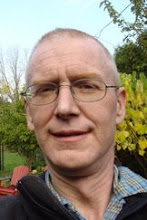In this full year course, LAWS4908 I will be writing an honours essay with Neil Sargent supervising me. We have agree on a paper that questions the definition of computer crime. So that course counts as one course for both fall and winter terms.
The other legal studies course might be one looking at drugs, drug users and the state, LAWS4306B and Dawn Moore is the professor. I have read Howard Becker's the Outsiders yesterday and today because this book is one of the weeks readings for LAWS4306B. I have downloaded other weeks' readings and have browsed some of the other readings in the library. This course is a critical look at drug laws.
But instead of this law course I might try a course in international criminal law issues, LAWS4903C. I haven't decided which of these last two I will study. The international criminal law would be good to know for computer crime studies but the drug law course would also be useful as this is the most common criminal law issue I face in Canadian society. Also the laws concerning marijuana might be changed very soon so this would be a good course to follow these changes closely.
Ok that's two courses and usually what I study in terms of course load. It is also officially a full time load for a disabled student. I will need two law courses in winter one being the last half of LAWS4908, the paper and the other maybe medical issues in criminal law, like the insanity defence for instance.
But this summer I was enjoying helping teach statistics and last school year I enjoyed the people in our math department where I worked as a teachers assistant. I also borrowed and read and am reading a number of math books successfully. So I wanted to add a third course in math or statistics to my study load.
My dad and brother have now agreed that I should be supported to try a heavier course load. My argument is that I am doing great in school including a top of the class mark this summer so I should be allowed to see if I can recover fully to a full time job or study load. If I find it too much I can go back to a lower course load in January. I am very pleased with their support. But because of this I will not apply to be a teaching assistant in two departments this term. I will only try to be a TA in the math department ot the law department at the same time.
